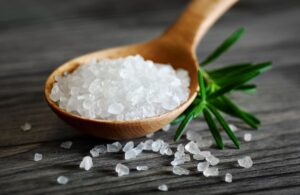
In 2023, enterprises engaged in operations with ferrous metal scrap may increase the volume of scrap metal procurement by 20-25% compared to the previous year – up to 1.2-1.25 million tons.
Such a draft balance of scrap metal formation and consumption in the country for 2023 was recommended for approval by the majority of votes of the members of the working group under the Ministry of Strategic Industries of Ukraine.
At the meeting of the working group chaired by the First Deputy Minister Oleg Mozhny considered the issue of approval of the balance of formation and consumption of scrap metal in Ukraine for 2023. The meeting was attended by industry associations: the Ukrainian Association of Secondary Metals (UAVtormet), UAVtormetresurs, the Association of Enterprises “Ukrmetallurgprom”, the Association of Foundrymen of Ukraine (ALU), as well as industry experts and scientists.
According to the draft balance sheet, Ukraine will smelt 5.2-5.6 million tons of steel in 2023 (6.263 million tons were produced in 2022), harvest 1.2-1.25 million tons of scrap metal (in 2022 – 997 thousand tons), metal enterprises will consume 5.2-5.6 million tons of steel (in 2022 – 997 thousand tons). steel companies will consume 0.950-1 million tons of scrap metal (896 thousand tons), export 180-200 thousand tons of scrap metal (53.6 thousand tons), increasing the export of raw materials strategic for metallurgists by 3.4-3.7 times compared to last year.

The share of imported salt in the Ukrainian market in January-June 2023 reached 15%, 211.737 thousand tons were purchased on foreign markets for $46.196 million.
According to statistics released by the State Customs Service (SCS), the largest supplier of salt to Ukraine remains Turkey, which provided 32.4% of all salt imports in the first half of 2023 and earned $14.966 million.
Egypt and Romania accounted for 23.3% and 17.7% of shipments, for which these countries earned $10.745 million and $8.174 million, respectively.
A year earlier, the top three importers of Ukrainian salt were Turkey with a market share of 29.8% of supplies, Poland and Romania with 22.8% and 19.8% respectively. Their revenue from its sale amounted to $7.492 million, $5.722 million and $4.969 million, respectively.
The State Customs Service recalls that in 2022, the share of imported salt in the domestic market totaled 15%. On foreign markets Ukraine purchased 438.105 thousand tons of salt for the amount of $92.116 million.
In 2021, the level of imported salt in Ukraine did not exceed 2%, which amounted to 142.813 thousand tons at $12.920 million.
For export in this pre-war year, Ukrainian enterprises supplied 710.041 thousand tons of salt, from the sale of which they received $28.323 million.
In 2022, Ukraine reduced salt exports by 80% to 142.038 thousand tons compared to 2021, with revenues of $3.821mn.
The main buyers of Ukrainian salt in 2021 and 2022 were Poland (import share of 39.1% and 44.4%, respectively), Hungary (27.4% and 27.3%) and Romania (7.3% and 5.1%).
In the first half of 2023, exports of Ukrainian salt amounted to only 149 tons at $32 thousand. It was bought by Romania (93.5% of supplies) and Moldova (3.2%).
Earlier, the analytical “Club of Experts” analyzed the situation with export and import of salt in Ukraine, for more details see the link

JSC DTEK Zakhidenergo continues to buy out all the proposed interstate section capacity for exporting electricity to Poland at daily auctions for April, according to data on the website of NPC Ukrenergo.
According to the published results of the auction for April 2-6, the company bought 190 MW of distributed power for each hour of the day.
According to the data on the ENTSO-E website, from April 1 to April 5, exports are the same – in a flat schedule of 190 MWh all day.
As of April 6, data are not yet available.
As reported, on March 28, Ukrenergo resumed daily auctions for the purchase of interstate cross sections for the export of electricity to Poland. All import-export auctions were suspended on February 24 due to the entry of the Ukrainian power system into an isolated mode as part of synchronization with ENTSO-E.
The power systems of Ukraine and Europe switched to synchronous operation on March 16.

Ukrainian exporters in 2021 for the first time sent one sea container with frozen raspberries to the United States and Canada. This event is important for domestic producers, since this berry is traditionally more expensive in the markets of these countries than in other regions of the world.
As reported on the website of the Ukrainian Horticultural Association (UHA) on Monday, the importance of this event for the development of production and freezing of berries in Ukraine is explained by the high level of requirements for product quality and logistics, which were successfully overcome by Ukrainian suppliers this year.
“One shipment of raspberries was sent to Canada and the United States in the amount of one sea container. The logistics took about one and a half months, and the buyer was satisfied with the quality of the supplied products and is considering the possibility of continuing cooperation with Ukrainian suppliers on an ongoing basis,” the association said.
The association said that the higher import price for berries in the United States and Canada is due to high requirements for the quality of products, for the confirmation of which Ukrainian exporters have been certified by the FDA (The U.S. Food and Drug Administration).
“The United States and Canada account for about 80% of all global imports of frozen raspberries in value terms and about 65% in physical terms. However, Ukraine has traditionally exported frozen raspberries mainly to Poland, which makes good money on the re-export of Ukrainian raspberries to other countries of the world,” the organization said, citing Economist of the Investment Department of the Food and Agriculture Organization of the United Nations (FAO) Andriy Yarmak.
According to the UHA, the United States imports frozen raspberries from Chile, Mexico and Serbia, and Canada from Chile, Serbia, the United States and Mexico.
The approximate carrying capacity of a standard 40-foot sea container is 27 tonnes.
“Accordingly, for Ukraine, which is one of the five largest world exporters of frozen raspberries, it is very important to gain a foothold in these two most important sales markets. This is especially important amid the expected growth in production of all types of berries in 2022-2024. It remains to hope that not only the volume, but also the quality of the berries produced will grow,” the association said.
According to the data on the website of the Ukrainian Agribusiness Club, in 2020 Ukraine produced 35,000 tonnes of this berry, ranking seventh in the world in terms of its production. Some 89% of this berry was grown on household farms.
Last year, Ukraine exported 539 tonnes of raspberries, which is 2% of its total production. At the same time, Poland was practically the only consumer of Ukrainian fresh raspberries.

Ukraine in 2020 reduced steel exports to 15.2 million tonnes from 15.6 million tonnes a year earlier, but rose in the ranking of exporters from the tenth to the ninth place, according to the World Steel Association (Worldsteel).
According to the report, India was ranked higher than Ukraine last year among exporters with 17.1 million tonnes, Italy closed the top ten with 14.9 million tonnes, and China is still at the top of this list with 51.4 million tonnes, followed by Russia with 31.5 million tonnes and Japan with 29.8 million tonnes.
At the same time, due to the small volume of imports, Ukraine in the world ranking of net exporters in 2020 retained its fourth place with an indicator of 13.9 million tonnes, which is only slightly less than the 2019 indicator of 14 million tonnes.
The first place here is taken by Russia with 26.4 million tonnes, the second – by Japan with 24.8 million tonnes, the third – by South Korea with 16.1 million tonnes, while China is the fifth in this list with 13.5 million tonnes.
China was the largest importer of metal last year with 37.09 million tonnes, followed by the EU-28 with 32.6 million tonnes, excluding interregional trade, and the United States came third with 19.9 million tonnes.
In the ranking of net importers over 2020, the United States is leading with 13.6 million tonnes, the EU-28 is in the second place with 10 million tonnes, and Saudi Arabia is in the third place with 7.2 million tonnes.
Worldsteel recalls that in 2020 Ukraine produced 20.6 million tonnes of steel and took 12th place, the volume of pig iron production amounted to 20.4 million tonnes. At the same time, the country exported 3.1 million tonnes of pig iron last year, and its apparent consumption amounted to 17.3 million tonnes.
Apparent steel consumption in Ukraine in 2020, according to the association, amounted to 4.6 million tonnes, while consumption per capita – 105.5 kg.

Some 7.9% of Ukrainian exporting enterprises face obstacles in their activities, according to a survey by the Institute for Economic Research and Policy Consulting.
The rate in 2020 is the lowest since 2016, according to the study. In 2018, some 23.6% of exporters faced obstacles, while 19.3% in 2017 and 26.9% in 2016.
Large and small businesses (10.4% and 10.7%) more often report impediments to export compared to micro (8.1%) and medium (4.1%). Most often, they deal with obstacles in the implementation of exports by enterprises in the service sector (22.6%).
In Chernivtsi, Ternopil, Zhytomyr, Donetsk regions, there are no complaints about the presence of obstacles. Most often, such are reported by exporters from Rivne (22.2%), Ivano-Frankivsk (20%), Kirovohrad (20%), Sumy (20%), Poltava (18.8%) regions.
The main obstacles to export are the absence of simplified rules for determining the origin of goods (20.4%), a long wait for export clearance at customs (20.4%).
Among importers, 18.9% of the surveyed enterprises stated that they faced obstacles to their activities. This figure is also the lowest in all waves of the study since 2016. Some 28.4% of importers faced obstacles in 2018, some 29.3% in 2017 and 35.2% in 2016.
Cherkasy region is the only region where there are no complaints about import obstacles. Enterprises in Mykolaiv region most often point to impediments to imports (35.7%, every third respondent).
According to the respondents, the main obstacle to import is a lack of transparency in determining the customs value of goods that are imported (38.7%). Almost a third complain about the complexity of customs and tax legislation (32.4%). The third place in the rating of obstacles is taken by high rates of customs payments (27.5%).
The survey was conducted in 2020 by the civil society initiative “For Fair and Transparent Customs” with the support of the European Union, the International Renaissance Foundation and Atlas Network. More than 1,000 representatives of enterprises were interviewed: from micro-enterprises to large enterprises engaged in export and/or import. Most of the respondents are micro and small enterprises, representatives of industry and trade.